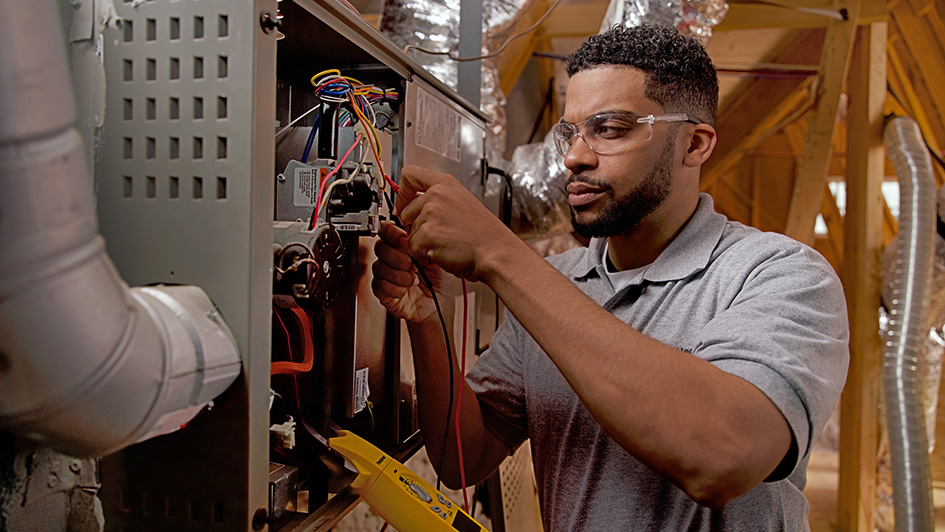
A furnace is usually a background player in your home, keeping you warm during the cold winter months. It frequently won't be noticed until something goes wrong.
One root cause could be that your furnace has a cracked heat exchanger. It can be a safety risk, so it’s worthwhile to familiarize yourself with the signs of a cracked heat exchanger and what you should do if you are worried that might be the problem.
What Is a Heat Exchanger in a Furnace?
A heat exchanger helps move heat from the combustion chamber inside your furnace to the air that moves through the air ducts. It usually does this through coils or tubes that warm the air while serving as a barrier to keep byproducts created in the combustion chamber, called flue gasses, from escaping out into your home.
Is a Cracked Heat Exchanger Dangerous?
Thanks to its central role, it shouldn't come as a surprise that a broken heat exchanger can be very dangerous. Cracks in the heat exchanger can allow dangerous gasses – such as carbon monoxide, which can be lethal – to flow across your home.
For this reason, do NOT run your heater if you suspect you're dealing with a cracked heat exchanger, as this could make the whole household sick. Reach out to an HVAC professional right away if you believe your heating has a cracked heat exchanger that needs repair.
Four Symptoms of a Cracked Heat Exchanger:
- Furnace switches off: A cracked heat exchanger can cause your furnace to shut off.
- Strange Smells: If the air escaping your furnace has an intense chemical scent, it may be an indicator that gas is seeping through cracks in your heat exchanger. These byproducts, which can smell like formaldehyde, are a major warning sign.
- Carbon monoxide alarm is triggered or you notice health problems: If a cracked heat exchanger is releasing carbon monoxide inside your home, your carbon monoxide alarm should go off or family members could struggle with signs of carbon monoxide poisoning. Symptoms include headaches, dizziness, weakness, nausea, vomiting or feeling drowsy. If the alarm goes off or you feel unwell, get out of the home immediately and then call for help.
- Soot: If you find black sooty accumulating on the exterior of your furnace, it’s more evidence something could be seriously wrong.
What You Can Do if Your Furnace Heat Exchanger is Cracked
If you believe your furnace has a cracked heat exchanger, hire a pro well versed in furnace installation Wilkes Barre and Scranton as soon as possible so they can inspect your system and, if required, perform a furnace heat exchanger replacement. Costs will fluctuate depending on the situation, but estimates can roughly suggest $1,000 to $3,000.
Estimates aside, the good news is that heat exchangers are often protected by the warranty. It's a good idea to confirm the warranty paperwork on your furnace, since while the warranty may not cover the entire cost of repairs, it can significantly shrink your bill.
How to Prevent a Cracked Heat Exchanger in Your Home
One of the best ways to minimize the risk of problems in your furnace overall is with regular furnace maintenance. Furnaces provide the best possible return on investment when they work efficiently. Hiring a certified professional to inspect your furnace for old parts, clogged filters and other potential problems can keep you from getting a big bill later on.
It’s also a good idea to inspect your furnace filters every few months – it’s recommended some filters be replaced every 90 days or sooner if they are dirty or grimy. While the filters are not part of the heat exchanger itself, the strain of drawing air through a clogged filter makes the entire furnace work harder to accomplish its job. And the harder your furnace needs to run, the more wear and tear parts like the heat exchanger will endure.
